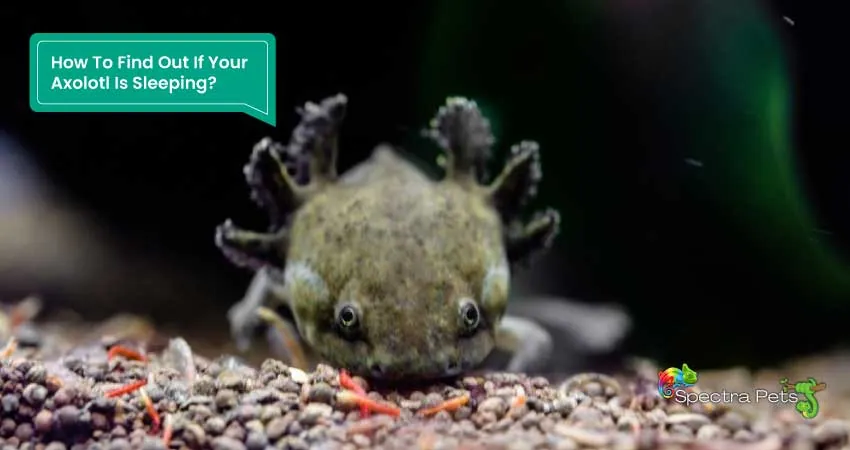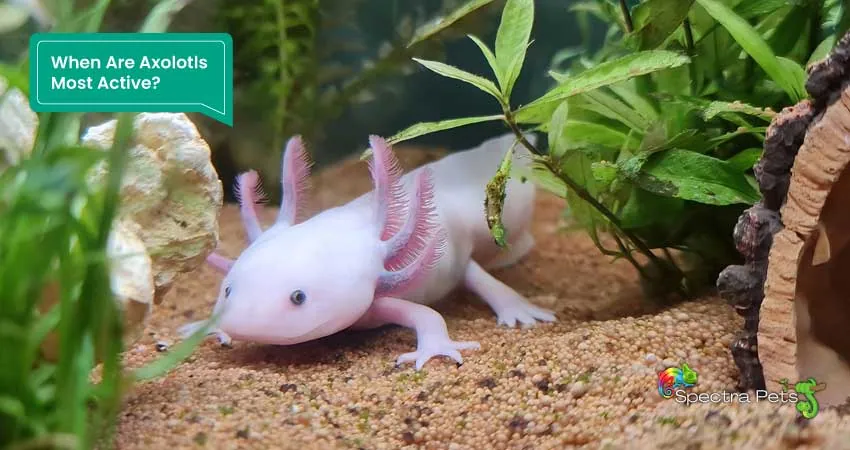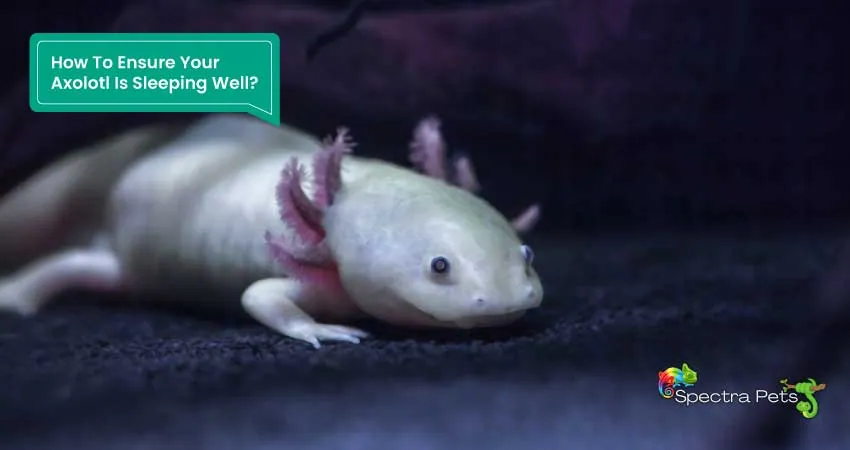In the enchanting world of aquatic wonders, few creatures captivate our hearts quite like the extraordinary axolotls. With their adorable smiley faces and fringed gills, these Mexican amphibians have gained a cult following among pet enthusiasts and nature lovers alike.
But since they don’t have eyelids, you’d find their eyes open all the time, making you wonder: “When does an Axolotl Sleep?”
Unlike conventional sleep patterns observed in many animals, axolotls boast a fascinating twist to their restful routines. That is, they do not sleep at night.
Axolotl is awake the whole night and they mostly sleep for long hours during the day. Sounds totally opposite of the usual, doesn’t it? Well, that makes it all the more charming.
If you want to know further and get closer to your Axolotl, I have more in-depth detail that would tell you everything you need to know about its sleeping habits. Check out below…
How Long Do Axolotls Sleep?

There’s no proper answer for this as Axolotls sleep the whole day in different bursts of 10 to 30 minute sessions in dark and secluded places like caves where they’d be safe from predators. So, they sleep 8-11 hours in 10-30 minute segments.
Since Axolotl lacks eyelids and its eyes are always open you really can’t tell whether it’s awake or not. From what we know about the typical activity of an axolotl during the day, you can be sure that whenever you find your axie to be inactive, it’s most likely asleep. But if you insist on knowing the exact details, the following part will serve you better.
How To Find Out If Your Axolotl Is Sleeping?

Everyone hates when they’re woken up from deep slumber. This goes for our pets too. If you’re a caring owner who wants to make sure not to disturb their precious Axolotl while they’re asleep, you need to figure out when exactly they are sleeping.
So, here are a few signs that your Axolotl is sleeping:
1. Inactive
If you see your Axie isn’t moving around much for hours, then most likely it’s sleeping. Although axolotls are lethargic creatures, they wouldn’t stay put in one place for hours without minor movements.
2. Skin color fades
You’ll notice your Axolotl has a pale skin color at times, and that should be outrageous because Axolotl has bizarre and flamboyant colors. No, you haven’t been tricked, it’s just that Axolotl’s metabolism slows down when they’re asleep. This is why the color looks paler in comparison.
3. Slow moving gills
When an Axolotl is asleep, it’ll exhibit slower gill movements. It’s because… well, they’re sleeping.
Where Do Axolotls Sleep At Night?

I’ve mentioned before that Axolotls sleep in caves, but that’s not the only place they like to stay in. Any deep, dark, and slightly murky place would do. There are a few reasons for this:
First of all, this gives them protection against predators who most of the time won’t be able to get inside. There’s also the option to camouflage themselves.
Secondly, due to the rich number of insects and worms that work as an organic food source.
So places like rifts between rocks, under the bushes, canals, lakes, caves, etc. are great places for an Axolotl to sleep at night.
When Are Axolotls Most Active?

Since Axolotl are nocturnal creatures, they prefer to stay awake the whole night and sleep during the day. Axolotl are crepuscular; meaning they are twilight creatures that are highly mobile during sunrise and sunset. This trait is more prevalent in wild axies than in a pet.
How To Ensure Your Axolotl Is Sleeping Well?

As we all know, the quality of our sleep actually has an effect on our health. As an Axolotl owner, you must take care of this if you want your friend to live long. Don’t know where to start? I’ll help:
- Regularly check water quality parameters like temperature, pH, metals, ammonia, etc. I have an article on how to set up an axolotl tank perfectly, you can have a look.
- Keep your tank in a shaded area so that light doesn’t directly fall on the tank and raise the temperature of the water to the point it affects the Axolotl.
- Decorate your tank in such a manner that it emulates a natural habitat. Check out these plants for axolotl tanks for some good recommendations.
Conclusion
In this world of endless wonder, the axolotls have bewitched us with their nocturnal secrets. While they may not tuck themselves into a cozy slumber like we do, their nighttime activities are crazy. Also, it is evident that Axolotls are a strong representation of our diverse world, and they deserve our respect.
As far as AxoloIs night sleep is concerned, I have done my best to provide you with as much information as possible. As you read today’s blog post about how and when axolotls sleep, I hope you make your friend’s day a little more comfortable.
